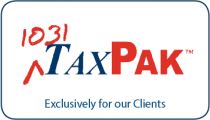You are here
1031 News › Clearing Up Confusion about Debt in a 1031 Exchange › Clearing Up Confusion about Debt in a 1031 ExchangeClearing Up Confusion about Debt in a 1031 Exchange
Error message
Deprecated function: The each() function is deprecated. This message will be suppressed on further calls in _taxonomy_menu_trails_menu_breadcrumb_alter() (line 436 of /home/expert1031/public_html/sites/all/modules/taxonomy_menu_trails/taxonomy_menu_trails.inc).Saving tax money can be a complicated process. Although confusing, understanding IRS Code Section 1031 is worth it! 1031 exchanges can provide significant savings on capital gain taxes.
An exchange connects the sale of an old property and the purchase of a new property to postpone taxes. Exchanges are great for investors who are selling investment property that has increased in value or has been depreciated for tax purposes.
Unfortunately, legal and tax experts are oftentimes confused about these IRS rules. Much of the confusion comes from the relief (payoff) and replacement of mortgage debt on exchange properties.
The common misunderstanding about debt is that the investor must replace 100% of the debt held in the old property by taking on an equal amount of debt against the new property. This is incorrect. The solution lies in a thorough understanding of two tax themes addressed in The Code – taxable cash and taxable debt relief.
Taxable Cash. Section 1031 states that any cash received, controlled or ‘touched’ by the investor during the exchange is taxable. Therefore, exchanges are set up so that the sale proceeds are transferred directly to a qualified intermediary (QI). The QI holds the funds until they are sent directly to the purchase closing. By using this structure and reinvesting all of the cash, the exchanger will have no taxable cash.
Taxable Debt Relief. Debt relief occurs when a mortgage or loan is paid off at the sale of the old property. For the IRS, this is considered taxable unless 1) the exchanger can replace the old debt with an equal or larger new loan OR 2) the exchanger increases the amount of cash invested in the new property by the amount of debt relief.
Two Examples. #1 – The old property is sold for $100k; $60k goes to pay off the mortgage and $40k goes to the QI. Then, the investor purchases a new property for $100k. The $40k held by the QI goes toward the purchase, but the investor is still short $60k. This shortage can come from either a new $60k loan or $60k of additional cash that the investor brings to the closing, or a combination of the two.
#2 – The investor in example #1 purchases a property for $90k. The shortage is now $50k. Regardless if the investor gets a new loan or brings additional cash, a $10k ‘buy-down’ has occurred. The $10k difference between the $60k loan paid off in the sale and the $50k loan/additional cash used to purchase the new property is taxable.
The Bottom Line. The new investment needs to be equal or higher than the sale price for the old property. There are some QI’s that attempt to facilitate an exchange based on faulty premise of getting you to obtain equal or greater debt on the new property. But the IRS is not concerned with the mix of equity and debt in your investment property. However, they are very concerned that your investment does not decrease in value. Any decrease in the overall investment amount, whether from taking cash out of the deal or from debt relief, is taxable.





Add new comment